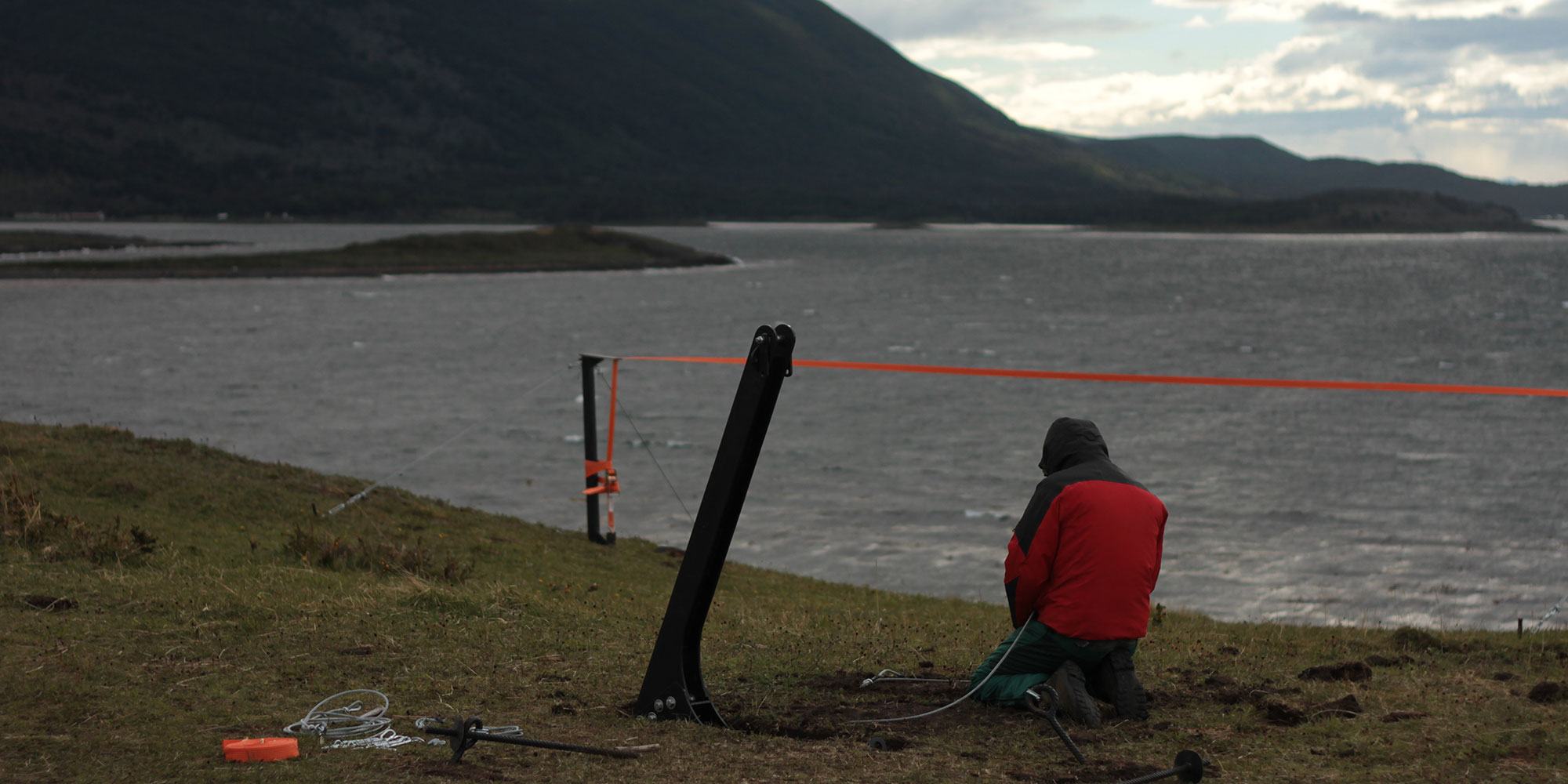An artistic, geological, archaeological and historical research trip into the southernmost continental island in the world before Antarctic; Cape Horn.
Video
Biographies
Alessandra Burotto (CL) / Curator
Alessandra Burotto, is curator of the Museum of Contemporary Art of the University of Chile, where she coordinates the MediaMAC/Anilla Unit area dedicated to putting value in artistic practices and languages that use technologies, helping to promote the field of media arts at the crossroads between art and science, technology, nature and society.
Journalist and graduated in Cultural Criticism from the University of Chile, for 10 years she has led the Ibero-American Network Anilla Cultural Latin America-Europe for the MAC, an international instance dedicated to the development of new museum formats and methodologies for contemporary cultural action through the intensive use of new information and communication technologies.
Víctor Mazón Gardoqui (ES/DE) / Artist | Researcher
Mazon Gardoqui´s work exposes the unheard and unseen, addressing the inaccessible and experiencing vulnerability and awareness on the viewer. Perception and altered states are key concepts on his performances through the use of sound or light. His work materializes in three main fields: actions or site-specific performances through experimental processes, exhibitions as consequences of previous actions and collaborative works through seminars to form a communal dialog. His practice explores amplification, electromagnetic phenomena and images of invisible fields by using locative audio and custom electronics.
https://victormazon.com
Paula Lopez Wood (CL) / Writer And Travel Journalist
Graduated from Film and Aesthetics from Universidad Católica de Chile. She has an MFA in Creative Writing in New York University and is currently doing a PhD in Literature at Universidad Católica de Chile. Her stories have been published in several printed and digital media such as Diario El Mercurio (Chile), Ladera Sur (Chile), Revista Escalando (Chile), Revista Endemico (Chile), Revista Desnivel (Spain), The Explorers Journal (United States), among others. She has also written scripts for documentaries about science, climate change and natural history (Wood Productions). In 2019 she published her first book, Animales extintos (Editorial Cuarto Propio), a group of short stories based in Patagonia. Her narrative has focused on sharing with deep knowledge and passion the territories of the extreme south of America.
Alfredo Prieto (CL) / (PhD) Archaeologist
Archaeologist, Professor at Universidad de Magallanes (UMAG), Professor of Philosophy at the UdeC, MSc. in Archeology at the University of Cambridge, Diploma in Advanced Studies in Prehistoric Archeology at the Universidad Autónoma de Barcelona, PhD in prehistoric archeology at the Universidad de Barcelona and visiting scholar in 2013 at Harvard University. He has focused his research work in the eld of prehistoric archeology and the Fuego-Patagónica ethnography. He currently works at the Centro de Investigación GAIA Antártica (UMAG).
Gerd Sielfeld (CL) / (Ph.D.) Seismotectonics
Seismotectonics in active volcanic chains and structural geology of fossil hydrothermal systems. Structural geologist consultant. Structural mapping and analysis of brittle strain related to fluid flow. Currently mapping at the El Indio-Pascual metallogenic belt (Au). He currently works at the Centro de Investigación GAIA Antártica (UMAG).
Nicolas Spencer (CL/AT) / Artist | Researcher
His work focuses on ways of understanding nature in all its depth and complexity. His installations mix the massiveness of its components (rocks, metals, gravity, wind, etc.) with the fragility and immateriality of sound.
Spencer’s artistic practice is contaminating (and contaminated by) other areas of knowledge as a way of to generate alternative epistemological and aesthetic perspectives.
http://nicolasspencer.cl/
Terra Ignota
Terra Ignota is informed by archeology, (colonial) history, (indigenous) practices, nature and climate of the region and is aiming to connect that to urgent global questions. It is rhizomatic, it moves slowly, listens, zooms in and out, and connects.
In a modular way – through small-scale and interconnected encounters and thematic clusters – it facilitates artistic alliances and interdisciplinary learning that is strongly rooted in the local. Terra Ignota aims to develop and grow organically from the local context while it is conscious of its outside perspective and embraces a non-extractivist attitude. Endorsing omitted native and historical knowledge, Terra Ignota aims to stimulate and contribute to new entangled narratives and artistic production. The dialogue and encounters it facilitates, will feed into the wider practice of the participating artists, curators and scientists.
http://terra-ignota.net/


